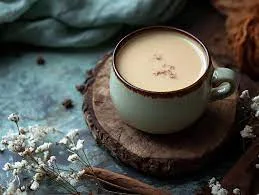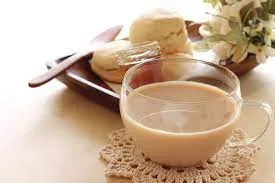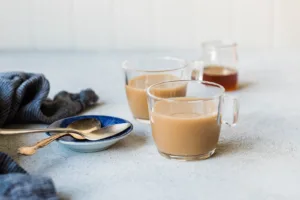News
The Rise of Bubble Tea: History, Culture, and Modern Innovations
Part 1: The Origins and Cultural Roots of Bubble Tea
Bubble tea, often affectionately referred to as boba, is more than just a beverage—it is a cultural phenomenon that has captured hearts around the globe. Its rise from a small Taiwanese innovation to an internationally recognized icon reflects not only a love for sweet, refreshing drinks but also the adaptability and creativity inherent in culinary culture. Understanding the origins and cultural roots of bubble tea provides insight into why this simple yet versatile beverage has become an enduring symbol of youth, innovation, and social connectivity.
The Birth of Bubble Tea in Taiwan
The story of bubble tea begins in the vibrant tea houses of Taiwan during the 1980s, a period marked by economic growth and a flourishing café culture. Tea had long been a staple of Taiwanese life, steeped in tradition and social ritual. Traditional Taiwanese tea houses emphasized the delicate art of tea preparation, focusing on the selection of leaves, brewing techniques, and the ceremonial aspect of serving tea. However, as Taiwan’s urban centers modernized, younger generations sought new ways to enjoy tea—ways that were fun, flavorful, and visually engaging.
It was within this context that bubble tea was born, combining the rich flavors of Taiwanese black or green tea with chewy tapioca pearls, sweetened milk, and sometimes fruit flavors. The drink’s initial appeal was multifaceted: it retained the familiar essence of tea while introducing novelty through texture, sweetness, and visual charm. According to popular accounts, two primary contenders are credited with its invention: Chun Shui Tang Tea House in Taichung, where tea was first shaken with ice to create a frothy texture, and Hanlin Tea Room in Tainan, where tapioca pearls were first added to cold tea. Regardless of which origin story one follows, it is clear that bubble tea emerged from an experimental, playful spirit that embraced both tradition and innovation.

The Role of Tapioca Pearls
Tapioca pearls, the defining feature of bubble tea, are small spheres made from tapioca starch derived from cassava root. Their chewy, slightly sticky texture provides a unique sensory experience that differentiates bubble tea from other beverages. In Taiwanese culinary tradition, chewy textures have long been appreciated in desserts and snacks, from mochi to sweet rice cakes. Incorporating tapioca pearls into tea was both a cultural nod to these traditional textures and a revolutionary idea for drinks.
The pearls themselves come in various forms: classic black boba, flavored or colored varieties, and mini pearls designed for a different mouthfeel. The addition of these pearls created the “bubble” effect—visually playful and texturally engaging—which quickly became a defining characteristic of the drink. In addition to taste, the tactile enjoyment of chewing pearls as one sipped tea contributed significantly to bubble tea’s widespread appeal.
Integration of Milk and Sweeteners
Another crucial element in bubble tea’s innovation was the inclusion of milk or non-dairy creamers. Traditionally, tea in Taiwan was consumed either plain or lightly sweetened. By introducing milk, bubble tea offered a richer, creamier texture and softened the natural bitterness of black or green teas. Sweeteners, ranging from sugar syrup to honey or fruit flavorings, were also added to appeal to younger consumers who preferred sweeter, more indulgent beverages. This combination of tea, milk, and pearls created a harmonious balance of flavor and texture that was novel and captivating at the time.
Cultural Significance in Taiwanese Society
Bubble tea’s rise was not solely due to taste; it was also deeply intertwined with cultural trends. During the 1980s and 1990s, Taiwan experienced a period of rapid urbanization and modernization. Young people increasingly gathered in teahouses and cafés as social hubs, seeking spaces where they could relax, socialize, and express individuality. Bubble tea became emblematic of this shift—a beverage that was casual, customizable, and approachable, yet innovative enough to capture attention.
The drink’s customizable nature allowed individuals to personalize their experience by adjusting sweetness, ice levels, milk type, and topping combinations. This personalization fostered a sense of ownership and creativity, aligning perfectly with the evolving lifestyle of urban Taiwanese youth. Bubble tea quickly transcended its role as a mere refreshment to become a medium for self-expression and social engagement.
Visual and Sensory Appeal
From its inception, bubble tea was designed to be visually captivating. The contrasting layers of tea, milk, and pearls created an immediately eye-catching presentation. Shaking the tea to mix ingredients produced frothy bubbles on the surface, further enhancing its appeal. This visual element, coupled with the interactive experience of sipping through a wide straw and chewing tapioca pearls, transformed bubble tea into a multi-sensory experience that engaged both sight and taste.
In addition to taste and texture, bubble tea’s visual charm contributed to its popularity among younger consumers. The aesthetic presentation made it a social experience—people enjoyed not just drinking bubble tea but also sharing photos, discussing flavor combinations, and experimenting with presentation. This aspect of visual culture laid the foundation for bubble tea’s eventual global spread, as image-driven social platforms like Instagram and TikTok later amplified its appeal.
Evolution of Flavors and Variations
While the original bubble tea relied on black tea, milk, and tapioca pearls, creativity and experimentation quickly led to new flavors and variations. Fruit teas emerged, combining fresh or flavored fruit with tea and pearls. Flavored syrups such as taro, matcha, and chocolate added new dimensions to traditional recipes. Pudding, jelly cubes, and popping pearls became common toppings, increasing both textural diversity and aesthetic appeal.
These innovations reflected the flexible and adaptable nature of bubble tea as a beverage category. Rather than being confined to a single formula, bubble tea became a platform for experimentation and personalization, allowing both consumers and vendors to explore endless possibilities in taste, texture, and presentation. This adaptability helped bubble tea remain relevant across decades, appealing to new generations with each iteration.
Bubble Tea as a Symbol of Modern Taiwanese Culture
Bubble tea is more than a drink; it is a cultural symbol. It represents a harmonious blend of tradition and modernity, combining the centuries-old tea culture of Taiwan with contemporary flavors, textures, and presentation. Bubble tea embodies social innovation, providing a casual yet creative medium for interaction, and has become an integral part of urban youth culture in Taiwan.
Moreover, bubble tea is a reflection of Taiwan’s identity on a global stage. The beverage carries with it stories of culinary ingenuity, local ingredients, and social evolution. It has become a point of pride for Taiwanese culture, celebrated not only domestically but also internationally as a hallmark of innovation in food and beverage.

Conclusion of Part 1
The origins and cultural roots of bubble tea highlight its transformation from a simple experiment in Taiwanese teahouses to a beloved national and international phenomenon. The combination of tea, milk, tapioca pearls, and sweeteners created a multi-sensory experience that was both novel and familiar, while the drink’s visual charm, interactive nature, and customizable options resonated with younger generations seeking creativity and social engagement. More than just a beverage, bubble tea became a cultural emblem of modern Taiwan—an enduring symbol of innovation, adaptability, and social connection.
Understanding these foundations sets the stage for exploring how bubble tea expanded beyond Taiwan’s borders, capturing hearts around the world and evolving into a global icon of flavor, creativity, and lifestyle—a journey that will be discussed in Part 2.
Part 2: Global Expansion and Popularization
Following its rise in Taiwan, bubble tea quickly captured the imagination of consumers across Asia, eventually becoming a global phenomenon. The drink’s unique combination of flavor, texture, and visual appeal made it a versatile product that could adapt to various markets, tastes, and cultural contexts. Part 2 explores how bubble tea spread beyond Taiwan, the role of social media and youth culture in driving its popularity, the emergence of prominent global brands, and how bubble tea became a lifestyle beverage embraced internationally.
Early Expansion Across Asia
After establishing a strong domestic following in the 1980s and 1990s, bubble tea began to expand into neighboring Asian countries. Taiwan’s proximity to Hong Kong, Singapore, Malaysia, Japan, and South Korea facilitated the initial wave of international exposure. Taiwanese immigrants and entrepreneurs introduced the drink to these markets, often opening small shops that recreated the traditional Taiwanese bubble tea experience.
Each country adapted bubble tea to local tastes, experimenting with sweetness levels, tea bases, and topping varieties. In Hong Kong, for instance, condensed milk was often incorporated to create a richer and sweeter flavor profile. In Japan, bubble tea shops began offering matcha and hojicha (roasted green tea) versions to align with traditional Japanese tea preferences. Meanwhile, in Southeast Asia, fruit-infused variations and tropical flavors became popular, reflecting the region’s affinity for fresh, vibrant ingredients.
The early expansion was facilitated by the portability and casual nature of bubble tea. Unlike formal tea ceremonies, bubble tea shops offered a quick, convenient, and customizable experience, appealing particularly to young people, students, and urban professionals seeking a modern alternative to traditional beverages.
The Role of Social Media and Youth Culture
One of the most significant drivers of bubble tea’s global popularity was its appeal to youth culture and its compatibility with social media trends. The visually striking appearance of bubble tea—with layered colors, pearls, jellies, and foams—made it highly shareable on platforms like Instagram, Facebook, and later TikTok. Photographs of aesthetically arranged bubble tea became symbolic of a fun, modern, and connected lifestyle.
Young consumers embraced bubble tea not just as a drink but as a social experience. Visiting bubble tea shops became a form of social engagement—meeting friends, customizing drinks, and sharing their creations online. This trend reinforced the beverage’s popularity, creating a feedback loop where visual appeal and social sharing drove both curiosity and consumption.
Moreover, bubble tea aligned with the global rise of casual, trendy cafés that blended food, drink, and social space. Just as coffee shops in the West became cultural hubs, bubble tea shops served as gathering spots for youth in Asia, fostering community and lifestyle branding. The combination of personalization, creativity, and social interaction made bubble tea more than a beverage—it became an emblem of youth identity and modern urban culture.
Emergence of Global Brands
As demand grew, several Taiwanese brands began expanding internationally, establishing a presence in major metropolitan areas worldwide. Brands such as Gong Cha, Koi, Tiger Sugar, and Chatime became synonymous with quality and innovation, offering standardized recipes while introducing localized variations to suit each market.
-
Gong Cha: Known for its customizable sugar and ice levels, Gong Cha emphasized the quality of tea leaves and consistency of pearls, appealing to international audiences seeking authentic Taiwanese bubble tea.
-
Koi: Koi’s branding focused on premium ingredients and elegant presentation, emphasizing the artisanal aspects of bubble tea while introducing signature flavors and creative toppings.
-
Tiger Sugar: Tiger Sugar became famous for its visually dramatic “brown sugar tiger stripes” effect, creating drinks that were highly photogenic and instantly recognizable.
-
Chatime: With a widespread global presence, Chatime prioritized accessibility and variety, offering diverse tea bases, toppings, and seasonal offerings that catered to local tastes.
These brands played a pivotal role in standardizing quality, introducing consistent flavor profiles, and professionalizing bubble tea as an international product. They also showcased the beverage as a premium yet approachable lifestyle choice, contributing to its positioning beyond a simple snack or drink.
Adapting to Local Markets
Successful global expansion required thoughtful adaptation to local tastes, preferences, and cultural contexts. In Western countries, where consumers might not be accustomed to tapioca pearls or sweet milk teas, shops experimented with flavors such as chai, caramel, or chocolate, and offered alternatives like fruit jellies, aloe cubes, or flavored popping pearls. Additionally, vegan or lactose-intolerant consumers were accommodated through soy, almond, or oat milk options.
Marketing strategies often emphasized customization, highlighting the ability to control sweetness, ice level, and toppings. This flexibility resonated with international consumers, who valued personalization and interactive experiences. Some shops even integrated local flavors—matcha in Japan, taro in Southeast Asia, or pumpkin spice in the U.S.—to create a sense of relevance and innovation.
Packaging also played a role. Clear cups showcased the layered visual appeal, wide straws allowed easy consumption of pearls, and visually appealing branding reinforced the identity of bubble tea as a trendy, modern beverage.
Lifestyle and “Instagrammable” Culture
By the late 2010s, bubble tea had become more than a drink—it was a lifestyle statement, particularly among younger demographics. The “Instagrammable” aspect of bubble tea was amplified by the rise of visually oriented social media platforms, where users shared aesthetically pleasing photos of their drinks. This trend encouraged shops to focus on presentation, offering layered drinks, vibrant colors, and creative garnishes to attract both attention and engagement online.
Bubble tea also became associated with leisure, fun, and social connectivity. Visiting a bubble tea café was not merely about consumption; it was an experience that involved customization, interaction, and enjoyment of the environment. Many shops designed interiors with bright colors, playful décor, and comfortable seating to complement the beverage experience. This holistic approach—combining product, presentation, and ambiance—strengthened bubble tea’s position as a cultural and lifestyle icon.

Expansion into North America, Europe, and Beyond
The international appeal of bubble tea eventually extended beyond Asia. In North America, cities with large Asian communities, such as Los Angeles, New York, and Vancouver, saw early adoption. The novelty of tapioca pearls, combined with the fun, customizable nature of the drink, attracted both immigrant communities seeking familiar flavors and a wider audience interested in trying new trends.
European cities followed suit, with bubble tea shops opening in London, Paris, Berlin, and Amsterdam. The beverage’s visually appealing layers and interactive experience resonated with global consumers seeking unique café experiences. Media coverage, online reviews, and social sharing further amplified awareness, creating curiosity and desire to try the drink.
In many markets, bubble tea shops adopted a hybrid approach—retaining the essence of Taiwanese tradition while incorporating global flavors, seasonal ingredients, and modern presentation styles. This combination of authenticity and adaptation proved critical to sustaining popularity and expanding consumer bases worldwide.
Bubble Tea as a Cultural Bridge
One remarkable aspect of bubble tea’s global expansion is its role as a cultural bridge. The beverage introduced Taiwanese culinary innovation to international audiences, creating opportunities for cross-cultural engagement. Through bubble tea, consumers gained exposure to Taiwanese ingredients, flavors, and tea traditions, fostering curiosity and appreciation for the culture behind the drink.
Furthermore, bubble tea facilitated intercultural socialization. Shops became spaces where diverse groups of people could gather, share experiences, and engage in conversations around taste, customization, and aesthetics. This social dimension contributed to bubble tea’s positioning not only as a beverage but as a medium of cultural exchange and global connectivity.
Conclusion of Part 2
The global expansion and popularization of bubble tea illustrate a remarkable journey from a small Taiwanese innovation to an internationally beloved beverage. Early adoption across Asia, adaptation to local tastes, strategic branding by global chains, and alignment with youth and social media culture fueled this rise. Bubble tea became more than a drink—it emerged as a lifestyle symbol, a visually captivating experience, and a cultural bridge connecting Taiwan to the world.
Beyond its geographic expansion, bubble tea’s popularity was further amplified by the creativity and experimentation that brands and independent shops introduced globally. Signature drinks, limited-time flavors, and playful presentations became marketing tools that drew in curious consumers eager to experience something new. For instance, the introduction of brown sugar boba milk, visually striking with caramel-like streaks against creamy milk, demonstrated how innovative aesthetics could captivate audiences while also delivering unique flavors. Seasonal and thematic offerings—such as tropical fruit blends in summer or festive red-and-gold drinks during Lunar New Year—provided opportunities for cultural celebration and marketing campaigns, keeping consumers engaged throughout the year.
Social media influencers and online communities played a crucial role in spreading these trends. Platforms like Instagram, TikTok, and YouTube created a global stage where creative drink presentations could be shared instantly, inspiring both home enthusiasts and café-goers. People were no longer simply consuming a beverage—they were part of a larger conversation about trends, flavors, and experiences. Visual appeal, interactive elements like popping pearls, and the sheer novelty of bubble tea contributed to a culture of participation, where consumers actively engaged with the product beyond its taste.
Moreover, the bubble tea phenomenon illustrated the importance of cultural adaptation in global markets. Brands that succeeded internationally carefully studied local preferences and dietary considerations, offering options such as plant-based milks, sugar-free alternatives, and regionally inspired flavors. This flexibility demonstrated an understanding of diverse consumer needs while maintaining the essence of bubble tea as a customizable, fun, and visually appealing beverage. By balancing authenticity with innovation, bubble tea shops around the world created experiences that resonated with a wide audience, ensuring the trend’s sustainability and relevance.
Ultimately, the global popularization of bubble tea reflects a convergence of taste, creativity, social engagement, and cultural storytelling. From humble Taiwanese beginnings to an internationally recognized lifestyle beverage, bubble tea’s journey underscores the power of innovation, visual appeal, and adaptability in creating a lasting global phenomenon. Its continued evolution promises to introduce new flavors, trends, and experiences, further cementing bubble tea’s place in the modern culinary landscape.
